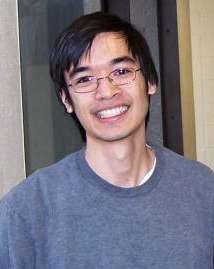List of multiple discoveries
Historians and sociologists have remarked the occurrence, in science, of "multiple independent discovery". Robert K. Merton defined such "multiples" as instances in which similar discoveries are made by scientists working independently of each other.[1] "Sometimes," writes Merton, "the discoveries are simultaneous or almost so; sometimes a scientist will make a new discovery which, unknown to him, somebody else has made years before."[2]
Commonly cited examples of multiple independent discovery are the 17th-century independent formulation of calculus by Isaac Newton, Gottfried Wilhelm Leibniz and others, described by A. Rupert Hall;[3] the 18th-century discovery of oxygen by Carl Wilhelm Scheele, Joseph Priestley, Antoine Lavoisier and others; and the theory of the evolution of species, independently advanced in the 19th century by Charles Darwin and Alfred Russel Wallace.
Multiple independent discovery, however, is not limited to such famous historic instances. Merton believed that it is multiple discoveries, rather than unique ones, that represent the common pattern in science.[4]
Merton contrasted a "multiple" with a "singleton"—a discovery that has been made uniquely by a single scientist or group of scientists working together.[5]
A distinction is drawn between a discovery and an invention, as discussed for example by Bolesław Prus.[6] However, discoveries and inventions are inextricably related, in that discoveries lead to inventions, and inventions facilitate discoveries; and since the same phenomenon of multiplicity occurs in relation to both discoveries and inventions, this article lists both multiple discoveries and multiple inventions.
3rd century BCE
.jpeg)
- Aristarchos of Samos (c. 310 – c. 230 BCE) was the first known originator of a heliocentric (solar) system. Such a system was formulated again some 18 centuries later by Nicolaus Copernicus (1473–1543).[7][8]
13th century CE
- 1242 – first description of the function of pulmonary circulation, in Egypt, by Ibn al-Nafis. Later independently rediscovered by the Europeans Michael Servetus (1553) and William Harvey (1616).
14th century
- Gresham's (Copernicus') law: Nicole Oresme (c. 1370); Nicolaus Copernicus (1519);[9] Thomas Gresham (16th century); Henry Dunning Macleod (1857). Ancient references to the same concept include one in Aristophanes' comedy The Frogs (405 BCE), which compares bad politicians to bad coin (bad politicians and bad coin, respectively, drive good politicians and good coin out of circulation).[10]
16th century
- Galileo Galilei and Simon Stevin: heavy and light balls fall together (contra Aristotle).
- Galileo Galilei and Simon Stevin: Hydrostatic paradox (Stevin c. 1585, Galileo c. 1610).
- Scipione dal Ferro (1520) and Niccolò Tartaglia (1535) independently developed a method for solving cubic equations.
- Olbers' paradox (the "dark-night-sky paradox") was described by Thomas Digges in the 16th century, by Johannes Kepler in the 17th century (1610), by Edmond Halley and by Jean-Philippe de Chéseaux in the 18th century, by Heinrich Wilhelm Matthias Olbers in the 19th century (1823), and definitively by Lord Kelvin in the 20th century (1901); some aspects of Kelvin's argument had been anticipated in the poet and short-story writer Edgar Allan Poe's essay, Eureka: A Prose Poem (1848), which also presaged by three-quarters of a century the Big Bang theory of the universe.[11][12][13]
- Continental drift, in varying independent iterations, was proposed by Abraham Ortelius (Ortelius 1596),[14] Theodor Christoph Lilienthal (1756),[15] Alexander von Humboldt (1801 and 1845),[15] Antonio Snider-Pellegrini (Snider-Pellegrini 1858), Alfred Russel Wallace,[16] Charles Lyell,[17] Franklin Coxworthy (between 1848 and 1890),[18] Roberto Mantovani (between 1889 and 1909), William Henry Pickering (1907),[19] Frank Bursley Taylor (1908),[20] and Alfred Wegener (1912).[21] In addition, in 1885 Eduard Suess had proposed a supercontinent Gondwana[22] and in 1893 the Tethys Ocean,[23] assuming a land-bridge between the present continents submerged in the form of a geosyncline; and in 1895 John Perry had written a paper proposing that the earth's interior was fluid, and disagreeing with Lord Kelvin on the age of the earth.[24]
17th century
- Sunspots – Thomas Harriot (England, 1610), Johannes and David Fabricius (Frisia, 1611), Galileo Galilei (Italy, 1612), Christoph Scheiner (Germany, 1612).
- Logarithms – John Napier (Scotland, 1614) and Joost Bürgi (Switzerland, 1618).
- Analytic geometry – René Descartes, Pierre de Fermat.
- Problem of points solved by both Pierre de Fermat (France, 1654), Blaise Pascal (France, 1654), and Huygens (Holland, 1657).
- Determinants – Gottfried Wilhelm Leibniz and Seki Kōwa.
- Calculus – Isaac Newton, Gottfried Wilhelm Leibniz, Pierre de Fermat and others.[25]
- Boyle's law (sometimes referred to as the "Boyle-Mariotte law") is one of the gas laws and basis of derivation for the Ideal gas law, which describes the relationship between the product pressure and volume within a closed system as constant when temperature remains at a fixed measure. The law was named for chemist and physicist Robert Boyle who published the original law in 1662. The French physicist Edme Mariotte discovered the same law independently of Boyle in 1676.
- Newton–Raphson method – Joseph Raphson (1690), Isaac Newton (Newton's work was written in 1671, but not published until 1736).
- Brachistochrone problem solved by Johann Bernoulli, Jakob Bernoulli, Isaac Newton, Gottfried Wilhelm Leibniz, Guillaume de l'Hôpital, and Ehrenfried Walther von Tschirnhaus. The problem was posed in 1696 by Johann Bernoulli, and its solutions were published next year.
- Steam engine: Patent granted to Thomas Savery in 1698. The invention has often been credited to Thomas Newcomen (1712). Other early inventors have included Taqī al-Dīn (1551), Jerónimo de Ayanz y Beaumont (1606), Giambattista della Porta, Giovanni Branca (1629), Cosimo de' Medici (1641), Evangelista Torricelli (1643), Otto Von Guericke (1672), Denis Papin (1679), and many others.
18th century
- Platinum – Antonio de Ulloa and Charles Wood (both in the 1740s).
- Leyden Jar – Ewald Georg von Kleist (1745) and Pieter van Musschenbroek (1745–46) [26].
- Lightning rod – Benjamin Franklin (1749) and Prokop Diviš (1754) (debated: Diviš's apparatus is assumed to have been more effective than Franklin's lightning rods in 1754, but was intended for a different purpose than lightning protection).
- Law of conservation of matter – discovered by Mikhail Lomonosov, 1756;[27] and independently by Antoine Lavoisier, 1778.[28]
- Oxygen – Carl Wilhelm Scheele (Uppsala, 1773), Joseph Priestley (Wiltshire, 1774). The term was coined by Antoine Lavoisier (1777). Michael Sendivogius (Polish: Michał Sędziwój; 1566–1636) is claimed as an earlier discoverer of oxygen.[29]
- Black-hole theory – John Michell, in a 1783 paper in The Philosophical Transactions of the Royal Society, wrote: "If the semi-diameter of a sphere of the same density as the Sun in the proportion of five hundred to one, and by supposing light to be attracted by the same force in proportion to its [mass] with other bodies, all light emitted from such a body would be made to return towards it, by its own proper gravity."[30] A few years later, a similar idea was suggested independently by Pierre-Simon Laplace.[31]
- Malthusian catastrophe – Thomas Robert Malthus (1798), Hong Liangji (1793).[32]
- A method for measuring the specific heat of a solid – devised independently by Benjamin Thompson, Count Rumford; and by Johan Wilcke, who published his discovery first (apparently not later than 1796, when he died).
19th century
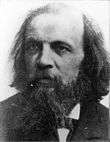
- In a treatise[33] written in 1805 and published in 1866, Carl Friedrich Gauss describes an efficient algorithm to compute the discrete Fourier transform. James W. Cooley and John W. Tukey reinvented a similar algorithm in 1965.[34]
- Complex plane – Geometrical representation of complex numbers was discovered independently by Caspar Wessel (1799), Jean-Robert Argand (1806), John Warren (1828), and Carl Friedrich Gauss (1831).[35]
- Cadmium – Friedrich Strohmeyer, K.S.L Hermann (both in 1817).
- Grotthuss–Draper law (aka the Principle of Photochemical Activation) – first proposed in 1817 by Theodor Grotthuss, then independently, in 1842, by John William Draper. The law states that only that light which is absorbed by a system can bring about a photochemical change.
- Beryllium – Friedrich Wöhler, A.A.B. Bussy (1828).
- Electromagnetic induction was discovered by Michael Faraday in England in 1831, and independently about the same time by Joseph Henry in the U.S.[36]
- Chloroform – Samuel Guthrie in the United States (July 1831), and a few months later Eugène Soubeiran (France) and Justus von Liebig (Germany), all of them using variations of the haloform reaction.
- Non-Euclidean geometry (hyperbolic geometry) – Nikolai Ivanovich Lobachevsky (1830), János Bolyai (1832); preceded by Gauss (unpublished result) c. 1805.
- Dandelin–Gräffe method, aka Lobachevsky method – an algorithm for finding multiple roots of a polynomial, developed independently by Germinal Pierre Dandelin, Karl Heinrich Gräffe, and Nikolai Ivanovich Lobachevsky.
- Electrical telegraph – Charles Wheatstone (England), 1837, Samuel F.B. Morse (United States), 1837.
- First law of thermodynamics – In the late 19th century, various scientists independently stated that energy and matter are persistent, although this was later to be disregarded under subatomic conditions. Hess's Law (Germain Hess), Julius Robert von Mayer, and James Joule were some of the first.
- 1846: Urbain Le Verrier and John Couch Adams, studying Uranus's orbit, independently proved that another, farther planet must exist. Neptune was found at the predicted moment and position.[37][lower-alpha 1]
- Bessemer Process – The process of removing impurities from steel on an industrial level using oxidation, developed in 1851 by American William Kelly and independently developed and patented in 1855 by eponymous Englishman Sir Henry Bessemer.
- The Möbius strip was discovered independently by the German astronomer–mathematician August Ferdinand Möbius and the German mathematician Johann Benedict Listing in 1858.
- Theory of evolution by natural selection – Charles Darwin (discovery about 1840), Alfred Russel Wallace (discovery about 1857–58) – joint publication, 1859.
- 1862: 109P/Swift–Tuttle, the comet generating the Perseid meteor shower, was independently discovered by Lewis Swift on 16 July 1862, and by Horace Parnell Tuttle on 19 July 1862. The comet made a return appearance in 1992, when it was rediscovered by Japanese astronomer Tsuruhiko Kiuchi.
- 1868: French astronomer Pierre Janssen and English astronomer Norman Lockyer independently discovered evidence in the solar spectrum for a new element that Lockyer named "helium".[39] (The formal discovery of the element was made in 1895 by two Swedish chemists, Per Teodor Cleve and Nils Abraham Langlet, who found helium emanating from the uranium ore cleveite.)
- 1869: Dmitri Ivanovich Mendeleyev published his periodic table of chemical elements, and the following year (1870) Julius Lothar Meyer published his independently constructed version.
- 1876: Oskar Hertwig and Hermann Fol independently described the entry of sperm into the egg and the subsequent fusion of the egg and sperm nuclei to form a single new nucleus.
- 1876: Elisha Gray and Alexander Graham Bell independently, the same day, filed patents for discovery of the telephone.
- 1877: Charles Cros described the principles of the phonograph that was, independently, constructed the following year (1878) by Thomas Edison.
- British physicist-chemist Joseph Swan independently developed an incandescent light bulb at the same time as American inventor Thomas Edison was independently working on his incandescent light bulb.[40] Swan's first successful electric light bulb and Edison's electric light bulb were both patented in 1879.[41]
- Ca. 1880 the integraph was invented independently by the British physicist Sir Charles Vernon Boys and by the Polish mathematician, inventor, and electrical engineer Bruno Abakanowicz. Abakanowicz's design was produced by the Swiss firm Coradi of Zurich.
- 1886: The Hall–Héroult process for inexpensively producing aluminum was independently discovered by the American engineer-inventor Charles Martin Hall and the French scientist Paul Héroult.[42]
- 1895: Adrenaline was discovered by the Polish physiologist Napoleon Cybulski.[43] It was independently discovered in 1900 by the Japanese chemist Jōkichi Takamine and his assistant Keizo Uenaka.[44][45]
- 1896: Two proofs of the prime number theorem (the asymptotic law of the distribution of prime numbers) were obtained independently by Jacques Hadamard and Charles de la Vallée-Poussin and appeared the same year.
- 1896: Discovery of radioactivity independently by Henri Becquerel and Silvanus Thompson.[46]
- 1898: Discovery of thorium radioactivity by Gerhard Carl Schmidt and Marie Curie.[47]
- Linguists Filip Fyodorovich Fortunatov and Ferdinand de Saussure independently formulated the sound law now known as the Saussure–Fortunatov law.[48][49]
- Vector calculus was invented independently by the American, Josiah Willard Gibbs (1839–1903), and by the Englishman, Oliver Heaviside (1850–1925).
20th century
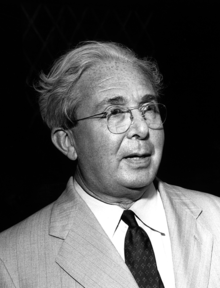
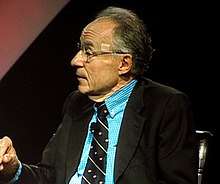

- 1902: Walter Sutton and Theodor Boveri independently proposed that the hereditary information is carried in the chromosomes.
- 1902: Richard Assmann and Léon Teisserenc de Bort independently discovered the stratosphere.
- E = mc2, though only Einstein provided the accepted interpretation – Henri Poincaré, 1900; Olinto De Pretto, 1903; Albert Einstein, 1905; Paul Langevin, 1906.[50]
- Brownian motion was independently explained by Albert Einstein (in one of his 1905 papers) and by Marian Smoluchowski in 1906.[51]
- The Einstein Relation was revealed independently by William Sutherland in 1905,[52][53] by Albert Einstein in 1905,[54] and by Marian Smoluchowski in 1906.[51]
- 1904: Epinephrine synthesized independently by Friedrich Stolz and by Henry Drysdale Dakin.
- 1905: The chromosomal XY sex-determination system—that males have XY, and females XX, sex chromosomes—was discovered independently by Nettie Stevens, at Bryn Mawr College, and by Edmund Beecher Wilson at Columbia University.[55]
- 1907: Lutetium discovered independently by French scientist Georges Urbain and by Austrian mineralogist Baron Carl Auer von Welsbach.
- Hilbert space representation theorem, also known as Riesz representation theorem, the mathematical justification of the Bra-ket notation in the theory of quantum mechanics – 1907 independently proved by Frigyes Riesz and Maurice René Fréchet.
- The Hardy–Weinberg principle is a principle of population genetics that states that, in the absence of other evolutionary influences, allele and genotype frequencies in a population will remain constant from generation to generation. This law was formulated in 1908 independently by German obstetrician-gynecologist Wilhelm Weinberg and, a little later and a little less rigorously, by British mathematician G.H. Hardy.
- The Stark–Einstein law (aka photochemical equivalence law, or photoequivalence law) – independently formulated between 1908 and 1913 by Johannes Stark and Albert Einstein. It states that every photon that is absorbed will cause a (primary) chemical or physical reaction.[56]
- Frequency-hopping spread spectrum in radio work was described by Johannes Zenneck (1908), Leonard Danilewicz (1929),[57] Willem Broertjes (1929), and Hedy Lamarr and George Antheil (1942 US patent).
- By 1913, vitamin A was independently discovered by Elmer McCollum and Marguerite Davis at the University of Wisconsin–Madison, and by Lafayette Mendel and Thomas Burr Osborne at Yale University, who studied the role of fats in the diet.
- Bacteriophages (viruses that infect bacteria) – Frederick Twort (1915), Félix d'Hérelle (1917).
- Rotor cipher machines – Theo A. van Hengel and R.P.C. Spengler (1915); Edward Hebern (1917); Arthur Scherbius (Enigma machine, 1918); Hugo Koch (1919); Arvid Damm (1919).
- Sound film – Joseph Tykociński-Tykociner (1922), Lee De Forest (1923).
- The Big Bang theory of the universe—that the universe is expanding from a single original point—was developed from the independent derivation of the Friedmann equations from Albert Einstein's equations of general relativity by the Russian, Alexander Friedmann, in 1922, and by the Belgian, Georges Lemaître, in 1927.[58] The Big Bang theory was confirmed in 1929 by the American astronomer Edwin Hubble's analysis of galactic redshifts.[59] But the Big Bang theory had been presaged three-quarters of a century earlier in the American poet and short-story writer Edgar Allan Poe's then much-derided essay, Eureka: A Prose Poem (1848),[11][60][61]
- Georgios Papanikolaou is credited with discovering as early as 1923 that cervical cancer cells can be detected microscopically, though his invention of the Pap test went largely ignored by physicians until 1943. Aurel Babeş of Romania independently made similar discoveries in 1927.[62]
- "Primordial soup" theory of the evolution of life from carbon-based molecules – Alexander Oparin (1924), J.B.S. Haldane.
- Jet stream was detected in the 1920s by Japanese meteorologist Wasaburo Oishi, whose work largely went unnoticed outside Japan because he published his findings in Esperanto.[63][64] Often given some credit for discovery of jet streams is American pilot Wiley Post, who in the year before his 1935 death noticed that at times his ground speed greatly exceeded his air speed.[65] Real understanding of the nature of jet streams is often credited to experience in World War II military flights.[66][67]
- Borůvka's algorithm, an algorithm for finding a minimum spanning tree in a graph, was first published in 1926 by Otakar Borůvka. The algorithm was rediscovered by Choquet in 1938; again by Florek, Łukasiewicz, Perkal, Steinhaus, and Zubrzycki; and again by Sollin in 1965.
- The discovery of phosphocreatine was reported by Grace and Philip Eggleton of the University of Cambridge[68] and separately by Cyrus Fiske and Yellapragada Subbarow of the Harvard Medical School[69] in 1927.
- Dmitri Skobeltsyn first observed the positron in 1929.[70] Chung-Yao Chao also observed the positron in 1929, although he did not recognize it as such.
- Chandrasekhar Limit—published by Subramanyan Chandrasekhar (1931–35); also computed by Lev Landau (1932).[71]
- A theory of protein denaturation is widely attributed to Alfred Mirsky and Linus Pauling, who published their paper in 1936,[72] though it had been independently discovered in 1931 by Hsien Wu,[73] whom some now recognize as the originator of the theory.[74]
- Electroluminescence in silicon carbide, now known as the LED, was discovered by Oleg Losev in 1927 and H. J. Round in 1907 independently, and possibly by Georges Destriau in ZnS 1936 who believed it was actually a form of incandescence.
- Natural deduction, an approach to proof theory in philosophical logic – discovered independently by Gerhard Gentzen and Stanisław Jaśkowski in 1934.
- The Gelfond–Schneider theorem, in mathematics, establishes the transcendence of a large class of numbers. It was originally proved in 1934 by Aleksandr Gelfond, and again independently in 1935 by Theodor Schneider.
- The Penrose triangle, also known as the "tribar", is an impossible object. It was first created by the Swedish artist Oscar Reutersvärd in 1934. The mathematician Roger Penrose independently devised and popularised it in the 1950s.
- Indefinability theorem, an important limitative result in mathematical logic – Kurt Gödel (1930; described in a 1931 private letter, but not published); Alfred Tarski (1936).
- In computer science, the concept of the "universal computing machine" (now generally called the "Turing Machine") was proposed by Alan Turing, but also independently by Emil Post,[75] both in 1936. Similar approaches, also aiming to cover the concept of universal computing, were introduced by S.C. Kleene, Rózsa Péter, and Alonzo Church that same year. Also in 1936, Konrad Zuse tried to build a binary electrically driven mechanical calculator with limited programability; however, Zuse's machine was never fully functional. The Atanasoff–Berry Computer ("ABC"), designed by John Vincent Atanasoff and Clifford Berry, was the first fully electronic digital computing device;[76] while not programmable, it pioneered important elements of modern computing, including binary arithmetic and electronic switching elements,[77][78] though its special-purpose nature and lack of a changeable, stored program distinguish it from modern computers.
- The atom bomb was independently thought of by Leó Szilárd,[79] Józef Rotblat[80] and others.
- The jet engine, independently invented by Hans von Ohain (1939), Secondo Campini (1940) and Frank Whittle (1941) and used in working aircraft.
- In agriculture, the ability of synthetic auxins 2,4-D, 2,4,5-T, and MCPA to act as hormone herbicides was discovered independently by four groups in the United States and Great Britain: William G. Templeman and coworkers (1941); Philip Nutman, Gerard Thornton, and Juda Quastel (1942); Franklin Jones (1942); and Ezra Kraus, John W. Mitchell, and Charles L. Hamner (1943). All four groups were subject to various aspects of wartime secrecy, and the exact order of discovery is a matter of some debate.[81]
- The point-contact transistor was independently invented in 1947 by Americans William Shockley, John Bardeen and Walter Brattain, working at Bell Labs,[82] and in 1948 by German physicists Herbert Mataré and Heinrich Welker, working at the Compagnie des Freins et Signaux, a Westinghouse subsidiary located in Paris.[83] The Americans were jointly awarded the 1956 Nobel Prize in Physics "for their researches on semiconductors and their discovery of the transistor effect."[84]
- A formal definition of cliques was simultaneously introduced by Luce and Perry (1949) and Festinger (1949)[85][86].
- NMR spectroscopy was independently developed in the late 1940s and early 1950s by the Purcell group at Harvard University and the Bloch group at Stanford University. Edward Mills Purcell and Felix Bloch shared the 1952 Nobel Prize in Physics for their discoveries.[87]
- Polio vaccine (1950–63): Hilary Koprowski, Jonas Salk, Albert Sabin.
- The integrated circuit was devised independently by Jack Kilby in 1958[88] and half a year later by Robert Noyce.[89] Kilby won the 2000 Nobel Prize in Physics for his part in the invention of the integrated circuit.[90]
- The QR algorithm for calculating eigenvalues and eigenvectors of matrices was developed independently in the late 1950s by John G. F. Francis and by Vera N. Kublanovskaya.[91] The algorithm is considered one of the most important developments in numerical linear algebra of the 20th century.[92]
- Quantum electrodynamics and renormalization (1930s–40s): Ernst Stueckelberg, Julian Schwinger, Richard Feynman, and Sin-Itiro Tomonaga, for which the latter 3 received the 1965 Nobel Prize in Physics.
- The maser, a precursor to the laser, was described by Russian scientists in 1952, and built independently by scientists at Columbia University in 1953. The laser itself was developed independently by Gordon Gould at Columbia University and by researchers at Bell Labs, and by the Russian scientist Aleksandr Prokhorov.
- Kolmogorov complexity, also known as "Kolmogorov–Chaitin complexity", descriptive complexity, etc., of an object such as a piece of text is a measure of the computational resources needed to specify the object. The concept was independently introduced by Ray Solomonoff, Andrey Kolmogorov and Gregory Chaitin in the 1960s.[93]
- The concept of packet switching, a communications method in which discrete blocks of data (packets) are routed between nodes over data links, was first explored by Paul Baran in the early 1960s, and then independently a few years later by Donald Davies.
- The principles of atomic layer deposition, a thin-film growth method that in the 2000s contributed to the continuation of semiconductor-device scaling in accord with Moore's law, were independently discovered in the early 1960s by the Soviet scientists Valentin Aleskovsky and Stanislav Koltsov and in 1974 by the Finnish inventor Tuomo Suntola.[94][95][96]
- Capital Asset Pricing Model (CAPM) is a popular model in finance for trading off risk versus return. Three separate authors published it in academic journals and a fourth circulated unpublished papers.
- 1963: In a major advance in the development of plate tectonics theory, the Vine–Matthews–Morley hypothesis was independently proposed by Lawrence Morley, and by Fred Vine and Drummond Matthews, linking seafloor spreading and the symmetric "zebra pattern" of magnetic reversals in the basalt rocks on either side of mid-ocean ridges.[97]
- Cosmic background radiation as a signature of the Big Bang was confirmed by Arno Penzias and Robert Wilson of Bell Labs. Penzias and Wilson had been testing a very sensitive microwave detector when they noticed that their equipment was picking up a strange noise that was independent of the orientation (direction) of their instrument. At first they thought the noise was generated due to pigeon droppings in the detector, but even after they removed the droppings the noise was still detected. Meanwhile, at nearby Princeton University two physicists, Robert Dicke and Jim Peebles, were working on a suggestion of George Gamow's that the early universe had been hot and dense; they believed its hot glow could still be detected but would be so red-shifted that it would manifest as microwaves. When Penzias and Wilson learned about this, they realized that they had already detected the red-shifted microwaves and (to the disappointment of Dicke and Peebles) were awarded the 1978 Nobel Prize in physics.[31]
- Conductive polymers: Between 1963 and 1977, doped and oxidized highly conductive polyacetylene derivatives were independently discovered, "lost", and then rediscovered at least four times. The last rediscovery won the 2000 Nobel prize in Chemistry, for the "discovery and development of conductive polymers". This was without reference to the previous discoveries. Citations in article "Conductive polymers."
- 1964: the relativistic model for the Higgs mechanism was developed by three independent groups: Robert Brout and François Englert; Peter Higgs; and Gerald Guralnik, Carl Richard Hagen, and Tom Kibble.[98] Slightly later, in 1965, it was also proposed by Soviet undergraduate students Alexander Migdal and Alexander Markovich Polyakov.[99] The existence of the "Higgs boson" was finally confirmed in 2012; Higgs and Englert were awarded a Nobel Prize in 2013.
- The Cocke–Younger–Kasami algorithm was independently discovered three times: by T. Kasami (1965), by Daniel H. Younger (1967), and by John Cocke and Jacob T. Schwartz (1970).
- The Wagner–Fischer algorithm, in computer science, was discovered and published at least six times.[100]:43
- The affine scaling method for solving linear programming was discovered by Soviet mathematician I.I. Dikin in 1967. It went unnoticed in the West for two decades, until two groups of researchers in the U.S. reinvented it in 1985.
- Neutral theory of molecular evolution was introduced by a Japanese biologist, Motoo Kimura, in 1968, and independently by two American biologists, Jack Lester King and Thomas Hughes Jukes, in 1969.
- In 1970, Howard Temin and David Baltimore independently discovered reverse transcriptase enzymes.
- The Knuth–Morris–Pratt string searching algorithm was developed by Donald Knuth and Vaughan Pratt and independently by J. H. Morris.
- The Cook–Levin theorem (also known as "Cook's theorem"), a result in computational complexity theory, was proven independently by Stephen Cook (1971 in the U.S.) and by Leonid Levin (1973 in the USSR). Levin was not aware of Cook's achievement because of communication difficulties between East and West during the Cold War. The other way round, Levin's work was not widely known in the West until around 1978.[101]
- Mevastatin (compactin; ML-236B) was independently discovered by Akira Endo in Japan in a culture of Penicillium citrinium[102] and by a British group in a culture of Penicillium brevicompactum.[103] Both reports were published in 1976.
- The Bohlen–Pierce scale, a harmonic, non-octave musical scale, was independently discovered by Heinz Bohlen (1972), Kees van Prooijen (1978) and John R. Pierce (1984).
- RSA, an algorithm suitable for signing and encryption in public-key cryptography, was publicly described in 1977 by Ron Rivest, Adi Shamir and Leonard Adleman. An equivalent system had been described in 1973 in an internal document by Clifford Cocks, a British mathematician working for the UK intelligence agency GCHQ, but his work was not revealed until 1997 due to its top-secret classification.
- Asymptotic freedom, which states that the strong nuclear interaction between quarks decreases with decreasing distance, was discovered in 1973 by David Gross and Frank Wilczek, and by David Politzer, and was published in the same edition of the journal Physical Review Letters.[104] For their work the three received the Nobel Prize in Physics in 2004.
- The J/ψ meson was independently discovered by a group at the Stanford Linear Accelerator Center, headed by Burton Richter, and by a group at Brookhaven National Laboratory, headed by Samuel Ting of MIT. Both announced their discoveries on November 11, 1974. For their shared discovery, Richter and Ting shared the 1976 Nobel Prize in Physics.
- Endorphins were discovered independently in Scotland and the US in 1975.
- 1975: two English biologists, Robin Holliday and John Pugh, and an American biologist, Arthur Riggs, independently suggested that methylation, a chemical modification of DNA that is heritable and can be induced by environmental influences, including physical and emotional stresses, has an important part in controlling gene expression. This concept has become foundational for the field of epigenetics, with its multifarious implications for physical and mental health and for sociopolitics.[105]
- Quantum cryptography—the first cryptographic method to rely not on mathematical complexity but on the laws of physics—was first postulated in 1984 by Charles Bennett and Gilles Brassard, working together, and later independently, in 1991, by Artur Ekert. The earlier scheme has proven the more practical.[106]
- Comet Levy-Rudenko was discovered independently by David H. Levy on 13 November 1984 and the next evening by Michael Rudenko. (It was the first of 23 comets discovered by Levy, who is famous as the 1993 co-discoverer of Comet Shoemaker-Levy 9, the first comet ever observed crashing into a planet, Jupiter.)[107]
- The use of elliptic curves in cryptography (Elliptic curve cryptography) was suggested independently by Neal Koblitz and Victor S. Miller in 1985.
- The Immerman–Szelepcsényi theorem, another fundamental result in computational complexity theory, was proven independently by Neil Immerman and Róbert Szelepcsényi in 1987.[108]
- In 1989, Thomas R. Cech (Colorado) and Sidney Altman (Yale) won the Nobel Prize in chemistry for their independent discovery in the 1980s of ribozymes – for the "discovery of catalytic properties of RNA" – using different approaches. Catalytic RNA was an unexpected finding, something they were not looking for, and it required rigorous proof that there was no contaminating protein enzyme.
- In 1993, groups led by Donald S. Bethune at IBM and Sumio Iijima at NEC independently discovered single-wall carbon nanotubes and methods to produce them using transition-metal catalysts.
- Saul Perlmutter, Adam G. Riess, and Brian P. Schmidt—working as members of two independent projects, the Supernova Cosmology Project and the High-Z Supernova Search Team—simultaneously discovered in 1998 the accelerating expansion of the universe through observations of distant supernovae For this, they were jointly awarded the 2006 Shaw Prize in Astronomy and the 2011 Nobel Prize in Physics.[109][110]
21st century
- In 2001 four different authors published different implementations of a distributed hash table.
- The Super Kamiokande and SNOLAB collaborations, whose findings were published in 1998 and 2001 respectively, both proved that neutrinos have mass. The 2015 Nobel Prize in Physics was shared by Takaaki Kajita of Japan and Arthur B. McDonald of Canada as a result.[111]
- James Allison of MD Anderson Cancer Center at the University of Texas at Houston discovered a mechanism enabling cancer immunotherapy in 1996. Tasuku Honjo of Kyoto University discovered another such mechanism in 2002. This outcome, which led to them sharing the 2018 Nobel Prize in Physiology or Medicine has been described as follows. "Each independently discovered that our immune system is restrained from attacking tumors by molecules that function as 'brakes.' Releasing these brakes (or 'brake receptors') allows our body to powerfully combat cancer."[112]
- In 2014, Paul Erdős' conjecture about prime gaps was proved by Kevin Ford, Ben Green, Sergei Konyagin, and Terence Tao, working together, and independently by James Maynard.[113][114]
Quotations
"When the time is ripe for certain things, these things appear in different places in the manner of violets coming to light in early spring."
— Farkas Bolyai to his son János Bolyai, urging him to claim the invention of non-Euclidean geometry without delay,
quoted in Ming Li and Paul Vitanyi, An introduction to Kolmogorov Complexity and Its Applications, 1st ed., 1993, p. 83.
"[Y]ou do not [make a discovery] until a background knowledge is built up to a place where it's almost impossible not to see the new thing, and it often happens that the new step is done contemporaneously in two different places in the world, independently."
— a physicist Nobel laureate interviewed by Harriet Zuckerman, in Scientific Elite: Nobel Laureates in the United States, 1977, p. 204.
"[A] man can no more be completely original [...] than a tree can grow out of air."
I never had an idea in my life. My so-called inventions already existed in the environment – I took them out. I've created nothing. Nobody does. There's no such thing as an idea being brain-born; everything comes from the outside.
See also
- Historic recurrence
- History of science
- History of technology
- List of examples of Stigler's law
- List of experiments
- List of misnamed theorems
- Logology (science of science)
- Matilda effect
- Matthew effect
- Multiple discovery
- Priority disputes
- Stigler's law of eponymy
- Synchronicity
- Timeline of historic inventions
Notes
- Priyamvada Natarajan notes that, while Le Verrier and Adams "shared credit for the discovery [of Neptune] until fairly recently... historians of science [have] revealed that while Adams did perform some interesting calculations, his were not as precise or as accurate as Le Verrier's, and, moreover, he had not published his work, while Le Verrier had shared his predictions." Le Verrier "presented the calculated position of the[e] unseen planet [Neptune] to the French Academy of Sciences in Paris on August 31, 1846, barely two days before Adams mailed his own solution to the astronomer royal, George Airy, at the Greenwich Observatory so that his calculations could be checked. Neither Adams nor Le Verrier knew that the other had been researching Uranus's orbit." Natarajan also notes that, "Though Neptune wasn't properly identified until 1846, it had been observed much earlier.": by Galileo Galilei (1612, 1613); by Michel Lalande (8 and 10 May 1795), nephew and pupil of French astronomer Joseph-Jérôme Lalande; by Scottish astronomer John Lambert, while working at the Munich Observatory in 1845 and 1846; and by James Challis (4 and 12 August 1846).[38]
References
- Merton, Robert K. (December 1963). "Resistance to the Systematic Study of Multiple Discoveries in Science". European Journal of Sociology. 4 (2): 237–282. doi:10.1017/S0003975600000801. JSTOR 23998345. Reprinted in: Robert K. Merton (15 September 1996). On Social Structure and Science. University of Chicago Press. pp. 305–. ISBN 978-0-226-52070-4.
- Robert K. Merton (1973). The Sociology of Science: Theoretical and Empirical Investigations. University of Chicago Press. p. 371. ISBN 978-0-226-52092-6.
- A. Rupert Hall, Philosophers at War, New York, Cambridge University Press, 1980.
- Robert K. Merton, "Singletons and Multiples in Scientific Discovery: a Chapter in the Sociology of Science", Proceedings of the American Philosophical Society, 105: 470–86, 1961. Reprinted in Robert K. Merton, The Sociology of Science: Theoretical and Empirical Investigations, Chicago, University of Chicago Press, 1973, pp. 343–70.
- Robert K. Merton, On Social Structure and Science, p. 307.
- Bolesław Prus, O odkryciach i wynalazkach (On Discoveries and Inventions): A Public Lecture Delivered on 23 March 1873 by Aleksander Głowacki [Bolesław Prus], Passed by the [Russian] Censor (Warsaw, 21 April 1873), Warsaw, Printed by F. Krokoszyńska, 1873, p. 12.
- Owen Gingerich, "Did Copernicus Owe a Debt to Aristarchus?" Journal for the History of Astronomy, vol. 16, no. 1 (February 1985), pp. 37–42.
- Dava Sobel, A More Perfect Heaven: How Copernicus Revolutionized the Cosmos, New York, Walker & Company, 2011, ISBN 978-0-8027-1793-1, pp. 18–19, 179–82.
- "Copernicus seems to have drawn up some notes [on the displacement of good coin from circulation by debased coin] while he was at Olsztyn in 1519. He made them the basis of a report on the matter, written in German, which he presented to the Prussian Diet held in 1522 at Grudziądz... He later drew up a revised and enlarged version of his little treatise, this time in Latin, and setting forth a general theory of money, for presentation to the Diet of 1528." Angus Armitage, The World of Copernicus, 1951, p. 91.
- Αριστοφάνης. "Βάτραχοι". Βικιθήκη. Retrieved 19 April 2013.
- Cappi, Alberto (1994). "Edgar Allan Poe's Physical Cosmology". Quarterly Journal of the Royal Astronomical Society. 35: 177–192. Bibcode:1994QJRAS..35..177C.CS1 maint: ref=harv (link)
-
- Rombeck, Terry (January 22, 2005). "Poe's little-known science book reprinted". Lawrence Journal-World & News.CS1 maint: ref=harv (link)
- Marilynne Robinson, "On Edgar Allan Poe", The New York Review of Books, vol. LXII, no. 2 (5 February 2015), pp. 4, 6.
- Romm, James (February 3, 1994), "A New Forerunner for Continental Drift", Nature, 367 (6462): 407–408, Bibcode:1994Natur.367..407R, doi:10.1038/367407a0.
- Schmeling, Harro (2004). "Geodynamik" (PDF) (in German). University of Frankfurt.
- Wallace, Alfred Russel (1889), "12", Darwinism …, Macmillan, p. 341
- Lyell, Charles (1872), Principles of Geology … (11 ed.), John Murray, p. 258
- Coxworthy, Franklin (1924). Electrical Condition; Or, How and where Our Earth was Created. J.S. Phillips. Retrieved December 6, 2014.
- Pickering, W.H (1907), "The Place of Origin of the Moon – The Volcani Problems", Popular Astronomy, 15: 274–287, Bibcode:1907PA.....15..274P,
- Frank Bursley Taylor (June 3, 1910) "Bearing of the Tertiary mountain belt on the origin of the earth’s plan", Bulletin of the Geological Society of America, 21 : 179–226.
- Wegener, Alfred (6 January 1912), "Die Herausbildung der Grossformen der Erdrinde (Kontinente und Ozeane), auf geophysikalischer Grundlage" (PDF), Petermanns Geographische Mitteilungen, 63: 185–195, 253–256, 305–309, archived from the original (PDF) on 4 October 2011.
- Eduard Suess, Das Antlitz der Erde (The Face of the Earth), vol. 1 (Leipzig, (Germany): G. Freytag, 1885), page 768. From p. 768: "Wir nennen es Gondwána-Land, nach der gemeinsamen alten Gondwána-Flora, … " (We name it Gondwána-Land, after the common ancient flora of Gondwána … )
- Edward Suess (March 1893) "Are ocean depths permanent?", Natural Science: A Monthly Review of Scientific Progress (London), 2 : 180- 187. From page 183: "This ocean we designate by the name "Tethys", after the sister and consort of Oceanus. The latest successor of the Tethyan Sea is the present Mediterranean."
- Perry, John (1895) "On the age of the earth", Nature, 51 : 224–227, 341–342, 582–585.
- Roger Penrose, The Road to Reality, Vintage Books, 2005, p. 103.
- Thomas S. Kuhn, The Structure of Scientific Revolutions, Chicago, The University of Chicago Press, 1996, p. 17.
- Vladimir D. Shiltsev, "Nov. 19, 1771: Birth of Mikhail Lomonosov, Russia's first modern scientist", APS [American Physical Society] News, November 2011 (vol. 20, no. 10) .
- Anirudh, "10 Major Contributions of Antoine Lavoisier", 17 October 2017 .
- http://www.masonic.benemerito.net/msricf/papers/marples/marples-michael.sendivogius.pdf
- Alan Ellis, "Black Holes – Part 1 – History", Astronomical Society of Edinburgh, Journal 39, 1999 Archived 2017-10-06 at the Wayback Machine. A description of Michell's theory of black holes.
- Stephen Hawking, A Brief History of Time, Bantam, 1996, pp. 43–45.
- "Hong's essential insight is the same as Malthus's." Wm Theodore de Bary, Sources of East Asian Tradition, vol. 2: The Modern Period, New York, Columbia University Press, 2008, p. 85.
- Gauss, Carl Friedrich, "Nachlass: Theoria interpolationis methodo nova tractata", Werke, Band 3, Göttingen, Königliche Gesellschaft der Wissenschaften, 1866, pp. 265–327.
- Heideman, M. T., D. H. Johnson, and C. S. Burrus, "Gauss and the history of the fast Fourier transform", Archive for History of Exact Sciences, vol. 34, no. 3 (1985), pp. 265–277.
- Roger Penrose, The Road to Reality, Vintage Books, 2005, p. 81.
- Halliday et al., Physics, vol. 2, 2002, p. 775.
- Priyamvada Natarajan, "In Search of Planet X" (review of Dale P. Cruikshank and William Sheehan, Discovering Pluto: Exploration at the Edge of the Solar System, University of Arizona Press, 475 pp.; Alan Stern and David Grinspoon, Chasing New Horizons: Inside the Epic First Mission to Pluto, Picador, 295 pp.; and Adam Morton, Should We Colonize Other Planets?, Polity, 122 pp.), The New York Review of Books, vol. LXVI, no. 16 (24 October 2019), pp. 39–41. (p. 39.)
- Priyamvada Natarajan, "In Search of Planet X" (review of Dale P. Cruikshank and William Sheehan, Discovering Pluto: Exploration at the Edge of the Solar System, University of Arizona Press, 475 pp.; Alan Stern and David Grinspoon, Chasing New Horizons: Inside the Epic First Mission to Pluto, Picador, 295 pp.; and Adam Morton, Should We Colonize Other Planets?, Polity, 122 pp.), The New York Review of Books, vol. LXVI, no. 16 (24 October 2019), pp. 39–41. (p. 39.)
- "Aug. 18, 1868: Helium Discovered During Total Solar Eclipse", https://www.wired.com/thisdayintech/2009/08/dayintech_0818/
- Maury Klein, Chapter 9: "The Cowbird, The Plugger, and the Dreamer", The Power Makers: Steam, Electricity, and the Men Who Invented Modern America, Bloomsbury Publishing USA, 2010.
- Kenneth E. Hendrickson III, The Encyclopedia of the Industrial Revolution in World History, volume 3, Rowman & Littlefield, 2014, p. 564.
- Isaac Asimov, Asimov's Biographical Encyclopedia of Science and Technology, p. 933.
- Skalski JH, Kuch J (April 2006). "Polish thread in the history of circulatory physiology". Journal of Physiology and Pharmacology. 57 (Suppl 1): 5–41. PMID 16766800.
- Yamashima T (May 2003). "Jokichi Takamine (1854–1922), the samurai chemist, and his work on adrenalin". Journal of Medical Biography. 11 (2): 95–102. doi:10.1177/096777200301100211. PMID 12717538.
- Bennett MR (June 1999). "One hundred years of adrenaline: the discovery of autoreceptors". Clinical Autonomic Research. 9 (3): 145–59. doi:10.1007/BF02281628. PMID 10454061.
- "Had Becquerel... not [in 1896] presented his discovery to the Académie des Sciences the day after he made it, credit for the discovery of radioactivity, and even a Nobel Prize, would have gone to Silvanus Thompson." Robert William Reid, Marie Curie, New York, New American Library, 1974, ISBN 0-00-211539-5, pp. 64–65.
- "Marie Curie was... beaten in the race to tell of her discovery that thorium gives off rays in the same way as uranium. Unknown to her, a German, Gerhard Carl Schmidt, had published his finding in Berlin two months earlier." Robert William Reid, Marie Curie, New York, New American Library, 1974, ISBN 0-00-211539-5, p. 65.
- N.E. Collinge, The Laws of Indo-European, pp. 149–52.
- Collinge, N. E. (1 January 1985). The Laws of Indo-European. John Benjamins Publishing. ISBN 978-9027235305.
- Barbara Goldsmith, Obsessive Genius: The Inner World of Marie Curie, New York, W.W. Norton, 2005, ISBN 0-393-05137-4, p. 166.
- von Smoluchowski, M. (1906). "Zur kinetischen Theorie der Brownschen Molekularbewegung und der Suspensionen". Annalen der Physik (in German). 326 (14): 756–780. Bibcode:1906AnP...326..756V. doi:10.1002/andp.19063261405.
- Sutherland, William (1 June 1905). "LXXV. A dynamical theory of diffusion for non-electrolytes and the molecular mass of albumin". Philosophical Magazine. Series 6. 9 (54): 781–785. doi:10.1080/14786440509463331.
- "Stokes-Einstein-Sutherland equation", P. Hänggi
- Einstein, A. (1905). "Über die von der molekularkinetischen Theorie der Wärme geforderte Bewegung von in ruhenden Flüssigkeiten suspendierten Teilchen". Annalen der Physik (in German). 322 (8): 549–560. Bibcode:1905AnP...322..549E. doi:10.1002/andp.19053220806.
- Brush, Stephen G. (June 1978). "Nettie M. Stevens and the Discovery of Sex Determination by Chromosomes". Isis. 69 (2): 162–172. doi:10.1086/352001. JSTOR 230427. PMID 389882.
- "Photochemical equivalence law". Encyclopædia Britannica Online. Retrieved 2009-11-07.
- Władysław Kozaczuk, Enigma: How the German Machine Cipher Was Broken, and How It Was Read by the Allies in World War II, edited and translated by Christopher Kasparek, Frederick, Maryland, University Publications of America, 1984, ISBN 0-89093-547-5, p. 27.
- Brian Greene, "Why He [Albert Einstein] Matters: The fruits of one mind shaped civilization more than seems possible", Scientific American, vol. 313, no. 3 (September 2015), pp. 36–37.
- "Big bang theory is introduced – 1927". A Science Odyssey. WGBH. Retrieved 31 July 2014.
- Rombeck, Terry (January 22, 2005). "Poe's little-known science book reprinted". Lawrence Journal-World & News.CS1 maint: ref=harv (link)
- Robinson, Marilynne, "On Edgar Allan Poe", The New York Review of Books, vol. LXII, no. 2 (5 February 2015), pp. 4, 6.
- M.J. O'Dowd, E.E. Philipp, The History of Obstetrics & Gynaecology, London, Parthenon Publishing Group, 1994, p. 547.
- Ooishi, W. (1926) Raporto de la Aerologia Observatorio de Tateno (in Esperanto). Aerological Observatory Report 1, Central Meteorological Observatory, Japan, 213 pages.
- Lewis, John M. (2003). "Oishi's Observation: Viewed in the Context of Jet Stream Discovery". Bulletin of the American Meteorological Society. 84 (3): 357–369. Bibcode:2003BAMS...84..357L. doi:10.1175/BAMS-84-3-357.
- Acepilots.com. Wiley Post. Retrieved on 8 May 2008.
- "Weather Basics – Jet Streams". Archived from the original on 29 August 2006. Retrieved 8 May 2009.
- "When the jet stream was the wind of war". Archived from the original on 29 January 2016. Retrieved 9 December 2018.
- Eggleton, Philip; Eggleton, Grace Palmer (1927). "The inorganic phosphate and a labile form of organic phosphate in the gastrocnemius of the frog". Biochemical Journal. 21 (1): 190–195. doi:10.1042/bj0210190. PMC 1251888. PMID 16743804.
- Fiske, Cyrus H.; Subbarow, Yellapragada (1927). "The nature of the 'inorganic phosphate' in voluntary muscle". Science. 65 (1686): 401–403. Bibcode:1927Sci....65..401F. doi:10.1126/science.65.1686.401. PMID 17807679.
- Frank, Close (2009-01-22). Antimatter. Oxford University Press. pp. 50–52. ISBN 978-0-19-955016-6.
- Stephen Hawking, A Brief History of Time, Bantam Press, 1996, p. 88.
- Mirsky, AE; Pauling, Linus (1936). "On the structure of native, denatured, and coagulated proteins". PNAS. 22 (7): 439–447. Bibcode:1936PNAS...22..439M. doi:10.1073/pnas.22.7.439. PMC 1076802. PMID 16577722.
- Wu, Hsien (1931). Studies on Denaturation of Proteins XIII. A Theory of Denaturation (reprint). Chinese Journal of Physiology. Advances in Protein Chemistry. 46. pp. 6–26. doi:10.1016/S0065-3233(08)60330-7. ISBN 9780120342464.
- Edsall, John (1995). "Hsien Wu and the First Theory of Protein Denaturation (1931)". Advances in Protein Chemistry Volume 46. Advances in Protein Chemistry. 46. pp. 1–5. doi:10.1016/S0065-3233(08)60329-0. ISBN 978-0-12-034246-4.
- See the "bibliographic notes" at the end of chapter 7 in Hopcroft & Ullman, Introduction to Automata, Languages, and Computation, Addison-Wesley, 1979.
- Ralston, Anthony; Meek, Christopher, eds. (1976), Encyclopedia of Computer Science (second ed.), pp. 488–489, ISBN 978-0-88405-321-7
- Campbell-Kelly, Martin; Aspray, William (1996), Computer: A History of the Information Machine, New York: Basic Books, p. 84, ISBN 978-0-465-02989-1.
- Jane Smiley, The Man Who Invented the Computer: The Biography of John Atanasoff, Digital Pioneer, 2010.
- Richard Rhodes, The Making of the Atomic Bomb, New York, Simon and Schuster, 1986, ISBN 0-671-44133-7, p. 27.
- Irwin Abrams website,
- Troyer, James (2001). "In the beginning: the multiple discovery of the first hormone herbicides". Weed Science. 49 (2): 290–297. doi:10.1614/0043-1745(2001)049[0290:ITBTMD]2.0.CO;2.
- "Twists and Turns in the Development of the Transistor". Institute of Electrical and Electronics Engineers, Inc.
- "1948 – The European Transistor Invention". Computer History Museum.
- "The Nobel Prize in Physics 1956".
- Festinger, Leon (1949). "The analysis of sociograms using matrix algebra". Human Relations. 2 (2): 153–158. doi:10.1177/001872674900200205.
- Luce, R. Duncan; Perry, Albert D. (1949). "A method of matrix analysis of group structure". Psychometrika. 14 (2): 95–116. doi:10.1007/BF02289146. PMID 18152948.
- "Background and Theory Page of Nuclear Magnetic Resonance Facility". Mark Wainwright Analytical Centre – University of Southern Wales Sydney. 9 December 2011. Archived from the original on 27 January 2014. Retrieved 9 February 2014.
- The Chip that Jack Built, c. 2008, HTML, Texas Instruments, retrieved 29 May 2008.
- Christophe Lécuyer, Making Silicon Valley: Innovation and the Growth of High Tech, 1930–1970, MIT Press, 2006, ISBN 0-262-12281-2, p. 129.
- Nobel Web AB, 10 October 2000 The Nobel Prize in Physics 2000, retrieved 29 May 2008.
- Golub, G.; Uhlig, F. (8 June 2009). "The QR algorithm: 50 years later its genesis by John Francis and Vera Kublanovskaya and subsequent developments". IMA Journal of Numerical Analysis. 29 (3): 467–485. doi:10.1093/imanum/drp012. ISSN 0272-4979.
- Dongarra, J.; Sullivan, F. (January 2000). "Guest Editors Introduction: The Top 10 Algorithms". Computing in Science & Engineering. 2 (1): 22–23. Bibcode:2000CSE.....2a..22D. doi:10.1109/MCISE.2000.814652.
- See Chapter 1.6 in the first edition of Li & Vitanyi, An Introduction to Kolmogorov Complexity and Its Applications, who cite Chaitin (1975): "this definition [of Kolmogorov complexity] was independently proposed about 1965 by A.N. Kolmogorov and me ... Both Kolmogorov and I were then unaware of related proposals made in 1960 by Ray Solomonoff."
- Ahvenniemi, Esko; Akbashev, Andrew R.; Ali, Saima; Bechelany, Mikhael; Berdova, Maria; Boyadjiev, Stefan; Cameron, David C.; Chen, Rong; Chubarov, Mikhail (2016-12-16). "Review Article: Recommended reading list of early publications on atomic layer deposition—Outcome of the "Virtual Project on the History of ALD"". Journal of Vacuum Science & Technology A: Vacuum, Surfaces, and Films. 35 (1): 010801. Bibcode:2017JVSTA..35a0801A. doi:10.1116/1.4971389. ISSN 0734-2101.
- Puurunen, Riikka L. (2014-12-01). "A Short History of Atomic Layer Deposition: Tuomo Suntola's Atomic Layer Epitaxy". Chemical Vapor Deposition. 20 (10–11–12): 332–344. doi:10.1002/cvde.201402012. ISSN 1521-3862.
- Malygin, Anatolii A.; Drozd, Victor E.; Malkov, Anatolii A.; Smirnov, Vladimir M. (2015-12-01). "From V. B. Aleskovskii's "Framework" Hypothesis to the Method of Molecular Layering/Atomic Layer Deposition". Chemical Vapor Deposition. 21 (10–11–12): 216–240. doi:10.1002/cvde.201502013. ISSN 1521-3862.
- Heirtzler, James R.; Le Pichon, Xavier; Baron, J. Gregory (1966). "Magnetic anomalies over the Reykjanes Ridge". Deep-Sea Research. 13 (3): 427–32. Bibcode:1966DSROA..13..427H. doi:10.1016/0011-7471(66)91078-3.
- Sean Carrol, The Particle at the End of the Universe: The Hunt for the Higgs and the Discovery of a New World, Dutton, 2012, p.228.
- A. A. Migdal and A. M. Polyakov, "Spontaneous Breakdown of Strong Interaction Symmetry and Absence of Massless Particles", JETP 51, 135, July 1966 (English translation: Soviet Physics JETP, 24, 1, January 1967)
- Navarro, Gonzalo (2001). "A guided tour to approximate string matching" (PDF). ACM Computing Surveys. 33 (1): 31–88. CiteSeerX 10.1.1.452.6317. doi:10.1145/375360.375365.
- See Garey & Johnson, Computers and intractability, p. 119.
Cf. also the survey article by Trakhtenbrot (see "External Links").
Levin emigrated to the U.S. in 1978. - Endo, Akira; Kuroda, M.; Tsujita, Y. (1976). "ML-236A, ML-236B, and ML-236C, new inhibitors of cholesterogenesis produced by Penicillium citrinium". The Journal of Antibiotics. 29 (12): 1346–8. doi:10.7164/antibiotics.29.1346. PMID 1010803.
- Brown, Alian G.; Smale, Terry C.; King, Trevor J.; Hasenkamp, Rainer; Thompson, Ronald H. (1976). "Crystal and Molecular Structure of Compactin, a New Antifungal Metabolite from Penicillium brevicompactum". J. Chem. Soc. Perkin Trans. 1 (11): 1165–1170. doi:10.1039/P19760001165. PMID 945291.
- D. J. Gross, F. Wilczek, Ultraviolet behavior of non-abeilan gauge theoreies, Physical Review Letters 30 (1973) 1343–1346; H. D. Politzer, Reliable perturbative results for strong interactions, Physical Review Letters 30 (1973) 1346–1349
- Israel Rosenfield and Edward Ziff, "Epigenetics: The Evolution Revolution", The New York Review of Books, vol. LXV, no. 10 (7 June 2018), pp. 36,38.
- Tim Folger, "The Quantum Hack: Quantum computers will render today's cryptographic methods obsolete. What happens then?" Scientific American, vol. 314, no. 2 (February 2016), pp. 50, 53.
- David H. Levy, "My Life as a Comet Hunter: The need to pass a French test, of all things, spurred half a century of cosmic sleuthing", Scientific American, vol. 314, no. 2 (February 2016), pp. 70–71.
- See EATCS on the Gödel Prize 1995 Archived 2007-08-04 at the Wayback Machine.
- Paál, G.; Horváth, I.; Lukács, B. (1992). "Inflation and compactification from Galaxy redshifts?". Astrophysics and Space Science. 191 (1): 107–124. Bibcode:1992Ap&SS.191..107P. doi:10.1007/BF00644200.
- In regard to his "cosmological constant", "Einstein... blundered twice: by introducing the cosmological constant for the wrong reason [to maintain a static universe, before the advent of the Big Bang theory] and again by throwing it out instead of exploring its implications [including an accelerating universe]." Lawrence M. Krauss, "What Einstein Got Wrong: Cosmology", Scientific American, vol. 313, no. 3 (September 2015), p. 55.
- Randerson, James and Ian Sample (6 October 2015). "Kajita and McDonald win Nobel physics prize for work on neutrinos". The Guardian. Retrieved 6 October 2015.
- Jerome Groopman, "The Body Strikes Back" (review of Matt Richtel, An Elegant Defense: The Extraordinary New Science of the Immune System: A Tale in Four Lives, William Morrow, 425 pp.; and Daniel M. Davis, The Beautiful Cure: The Revolution in Immunology and What It Means for Your Health, University of Chicago Press, 260 pp.), The New York Review of Books, vol. LXVI, no. 5 (21 March 2019), pp. 22–24.
- Ford, Kevin; Green, Ben; Konyagin, Sergei; Tao, Terence (2016). "Large gaps between consecutive prime numbers". Annals of Mathematics. 183 (3): 935–974. arXiv:1408.4505. Bibcode:2014arXiv1408.4505F. doi:10.4007/annals.2016.183.3.4.
- Maynard, James (21 August 2014). "Large gaps between primes". arXiv:1408.5110. Bibcode:2014arXiv1408.5110M. Cite journal requires
|journal=(help) - Casey Cep, "The Perfecter: A new biography of Thomas Edison recalibrates our understanding of the inventor's genius", The New Yorker, 28 October 2019, pp. 72–77. (p. 76.) Casey Cep makes reference to Robert K. Merton's concept of multiple discoveries, adding: "The problems of the age attract the problem solvers of the age, all of whom work more or less within the same constraints and avail themselves of the same existing theories and technologies." (p. 76.)
Bibliography
- Armitage, Angus (1951). The World of Copernicus. New York: Mentor Books.
- Isaac Asimov, Asimov's Biographical Encyclopedia of Science and Technology, second revised edition, New York, Doubleday, 1982.
- Cappi, Alberto (1994). "Edgar Allan Poe's Physical Cosmology". Quarterly Journal of the Royal Astronomical Society. 35: 177–192. Bibcode:1994QJRAS..35..177C.CS1 maint: ref=harv (link)
- N.E. Collinge (1985). The Laws of Indo-European. Amsterdam: John Benjamins. ISBN 978-0-915027-75-0. (U.S.), (Europe).
- Tim Folger, "The Quantum Hack: Quantum computers will render today's cryptographic methods obsolete. What happens then?" Scientific American, vol. 314, no. 2 (February 2016), pp. 48–55.
- Michael R. Garey and David S. Johnson (1979). Computers and Intractability: A Guide to the Theory of NP-Completeness. W.H. Freeman. ISBN 978-0-7167-1045-5.
- Owen Gingerich, "Did Copernicus Owe a Debt to Aristarchus?" Journal for the History of Astronomy, vol. 16, no. 1 (February 1985), pp. 37–42.
- Brian Greene, "Why He [Albert Einstein] Matters: The fruits of one mind shaped civilization more than seems possible", Scientific American, vol. 313, no. 3 (September 2015), pp. 34–37.
- A. Rupert Hall, Philosophers at War, New York, Cambridge University Press, 1980.
- Lawrence M. Krauss, "What Einstein Got Wrong: Cosmology (Everyone makes mistakes. But those of the legendary physicist are particularly illuminating)", Scientific American, vol. 313, no. 3 (September 2015), pp. 50–55.
- David Lamb, Multiple Discovery: The Pattern of Scientific Progress, Amersham, Avebury Press, 1984.
- David H. Levy, "My Life as a Comet Hunter: The need to pass a French test, of all things, spurred half a century of cosmic sleuthing", Scientific American, vol. 314, no. 2 (February 2016), pp. 70–71.
- Ming Li and Paul Vitanyi (1993). An Introduction to Kolmogorov Complexity and Its Applications, 1st ed. New York: Springer-Verlag. ISBN 978-0-387-94053-3. (U.S.), (Europe).
- Robert K. Merton, The Sociology of Science: Theoretical and Empirical Investigations, University of Chicago Press, 1973.
- Robert K. Merton, On Social Structure and Science, edited and with an introduction by Piotr Sztompka, University of Chicago Press, 1996.
- Robert William Reid, Marie Curie, New York, New American Library, 1974, ISBN 0-00-211539-5.
- Marilynne Robinson, "On Edgar Allan Poe", The New York Review of Books, vol. LXII, no. 2 (5 February 2015), pp. 4, 6.
- Rombeck, Terry (January 22, 2005). "Poe's little-known science book reprinted". Lawrence Journal-World & News.CS1 maint: ref=harv (link)
- Harriet Zuckerman, Scientific Elite: Nobel Laureates in the United States, New York, Free Press, 1977.
External links
- Annals of Innovation: In the Air:Who says big ideas are rare?, Malcolm Gladwell, The New Yorker, May 12, 2008
- The Technium: Simultaneous Invention, Kevin Kelly, May 9, 2008
- Apperceptual: The Heroic Theory of Scientific Development at the Wayback Machine (archived May 12, 2008), Peter Turney, January 15, 2007
- A Survey of Russian Approaches to Perebor (Brute-Force Searches) Algorithms, by B.A. Trakhtenbrot, in the Annals of the History of Computing, 6(4):384–400, 1984.
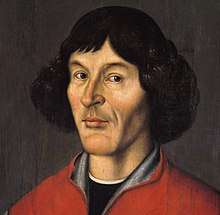
.jpg)
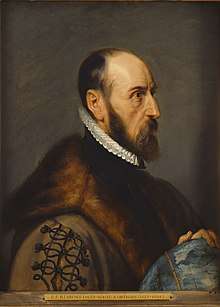

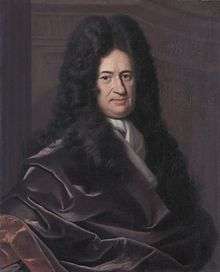
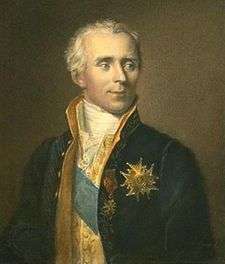
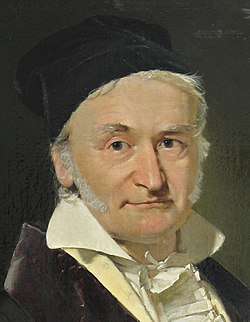


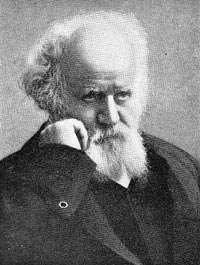
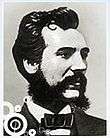
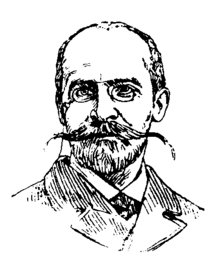
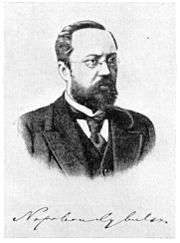
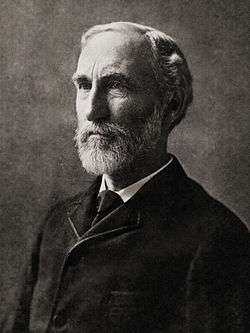
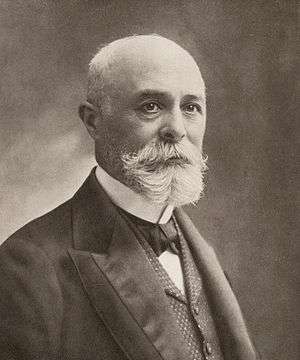


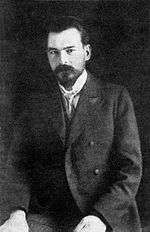
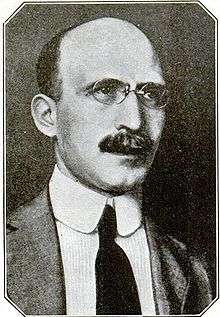
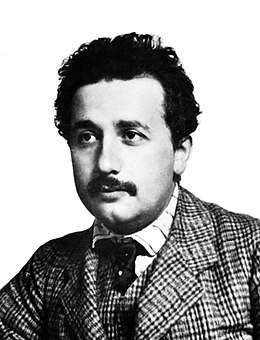
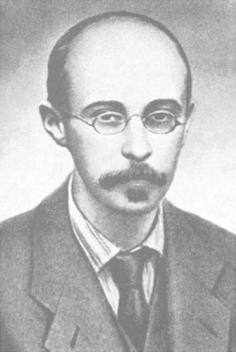
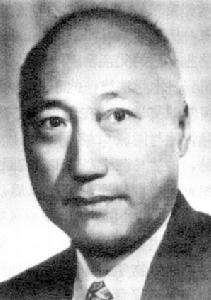


3.jpg)

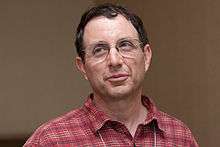
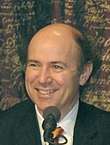
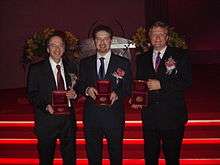
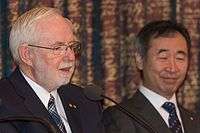
.jpg)
